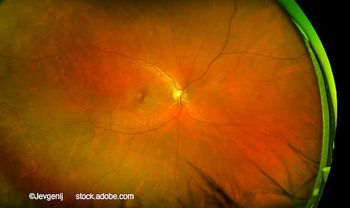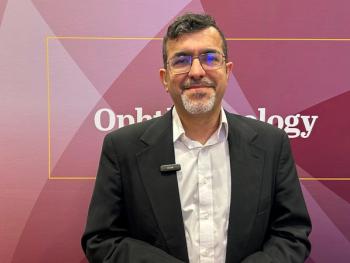
- Ophthalmology Times: April 2024
- Volume 49
- Issue 4
Adherence and tolerability are key in treatment of hypertension and glaucoma
Priorities can ensure optimal outcomes for patients diagnosed with diseases.
The treatment of glaucoma generally falls into 3 categories: topical administration of prescription ophthalmic medication, laser, and surgery. Despite the development of lower-risk surgical procedures such as minimally invasive glaucoma surgery (MIGS) and recent studies supporting the use of selective laser trabeculoplasty (SLT) earlier in the treatment paradigm, the use of topical medication remains the mainstay of both ocular hypertension (OH) and primary open-angle glaucoma (POAG) for most patients.
Patients and eye care practitioners often view the use of topical medication as the less aggressive option to control IOP; thus, concerns with tolerability are often given lower priority in exchange for the perceived reduction in risk profile.
When prescribing a topical glaucoma medication for the treatment of elevated IOP, we must trust that the patient will remain adherent to their treatment regimen. Adherence is a significant factor influencing why a patient with OH or glaucoma may progress. Numerous studies demonstrate that adherence to topical glaucoma therapy is generally very poor, especially when a patient experiences various treatment-related adverse effects (AEs).1
Systemic reactions tend to be more rare; however, localized ocular AEs are much more common and become tolerated as part of treatment. These AEs can be a result of the medications but may also be due to preservatives commonly utilized.
Thimerosal was one of the first eye drop preservatives; however, it produced a high rate of allergic reactions. It was replaced with benzalkonium chloride (BAK), which was better tolerated but was still associated with a variety of AEs. The relationship between BAK and ocular surface disease (OSD) is well known and has been demonstrated in several landmark clinical studies. Utilized in approximately 70% of ophthalmic formulations, BAK is known to cause cytotoxic damage to conjunctival and corneal epithelial cells, which may result in ocular surface staining, increased tear breakup time, and higher OSD symptom scores.1 The effect on conjunctival health can also translate to having an impact on incisional surgery, should it be required for management of IOP at some point in the future.
Patient-reported data has demonstrated decreased quality of life (QOL) related to symptoms of dry eye and the increase in economic burden when managing a long-term disease. Nearly 15% of elderly patients are reported to have dry eye. In older patients who are treated medically for POAG, this increases to 48% to 59%. Research has also demonstrated that patients being treated with topical glaucoma medication recorded lower QOL scores vs patients without ocular surface damage. It would be reasonable to conclude that improving the ocular surface may also improve adherence. Jaenen et al reported that each recorded symptom and all the palpebral, conjunctival, and corneal signs were significantly more frequent (P < .0001) in the preserved than in the preservative free, such as pain or discomfort during instillation (48% vs 19%), foreign body sensation (42% vs 15%), stinging or burning (48% vs 20%), and dry eye sensation (35% vs 16%). A total of 68% of the patients had a second visit performed, of whom 63% (6083) had been evaluated on treatment difference. A significant decrease (P < .0001) of all ocular symptoms and signs was observed in patients in whom the preserved eye drops were diminished in number or altered into preservative-free drops.
Overall medication burden, preservative burden, and optimized care may be achieved through the strategic use of preservative-free drops, sustained-release drug-delivery platforms, SLT, and MIGS procedures. Focusing our efforts to improve long-term stability and tolerability continue to be top drivers when caring for patients with OH and POAG.
Preservative-free options
As previously discussed, the chronic use of antihypertensive medication leads to corneal toxicity and inflammation of the conjunctiva. Travatan and Alphagan P use different preservatives that cause less hyperemia of the conjunctiva and corneal staining. Zioptan, Cosopt PF, and Timoptic in Ocudose are free of preservatives, leading to more tolerability and decreased OSD. Imprimis compounded antihypertensive medications combine multiple formulas into 1 bottle to limit the number of bottles used and number of drops on the eye.
In December 2022, the first and only preservative-free latanoprost was approved by the FDA. Iyuzeh from Thea Pharmaceuticals is unique in that it does not need to be refrigerated. Reduced IOP of 3 to 8 mm Hg was reported with a baseline of 19 to 24 mm Hg. We are seeing that more patients are adherent to taking medication as prescribed when the AEs of dry eye are less. In one study, Jandroković et al found that on top of improved adherence and tolerability, switching to a preservative-free formulation resulted in IOP that was more controlled. The relationship between reduced adherence and IOP fluctuation should be kept in mind, especially when we do not see these IOP spikes clinically and the patient is getting worse.
Selective laser trabeculoplasty
The LiGHT trial, which looked at SLT as a first-line treatment, demonstrated that IOP reduction was just as effective as starting an antihypertensive glaucoma medication.
Drug delivery devices
Drug delivery devices have been making their way into the treatment space. Bimatoprost SR (AbbVie), a biodegradable implant in the anterior chamber, was approved in 2020, proving sustained IOP-lowering effect from 4 months to 2 years. Bimatoprost-eluting contact lenses (MediPrint Ophthalmics) are showing promise in IOP reduction and tolerability. iDose TR (Glaukos) is an implant in which the stent with a drug-eluting membrane is placed in the TM. Travoprost is released for extended periods of time and can be removed and replaced.
Minimally invasive glaucoma surgery
SLT, biodegradable implants, and MIGS have revolutionized the space to meet our main goals. MIGS has been found to reduce medication burden and decrease IOP in a safe and
effective manner. There are many advantages to having multiple devices as some are approved for mild to moderative POAG and
others for refractory glaucoma or in conjunction with cataract surgery or standalone glaucoma surgery.
Although we can intervene earlier in the disease process, many patients still require topical options. While efficacy may be a primary goal for both the patient and physician, several factors impact patient adherence to the treatment regimen. Ease of administration, understanding of disease, complexity of dosing, forgetfulness, and expense can all influence adherences. In addition, the tolerability of the medication has been demonstrated to be a main issue.2
A significant challenge in the treatment of glaucoma, particularly that in earlier stages, is that the patient does not perceive the visual effects, nor do they have an impact on activities of daily living. They can be exquisitely aware, however, of the discomfort resulting from ocular surface disease exacerbation and its influence on quality of life. At the end of the day, for topical glaucoma treatment to remain effective, adherence to the treatment regimen is necessary. The need to improve tolerability among drop options remains paramount.
Christine Larsen, MD
P: 651-748-4444
Larsen specializes in the treatment of glaucoma and cataract surgery at Minnesota Eye Consultants in Minneapolis. She completed her doctor of medicine degree at the University of Nebraska Medical Center in Omaha, where she obtained her ophthalmology residency training. She completed her fellowship in glaucoma at the University of Wisconsin in Madison. Larsen is a member of the American Academy of Ophthalmology, the American Glaucoma Society, and the American Society of Cataract and Refractive Surgery.
Deborah Ristvedt, DO
P: 320-762-8898
Ristvedt is a third-generation, board-certified eye surgeon with Vance Thompson Vision in Alexandria, Minnesota. She is an ophthalmologist who specializes in advanced cataract surgery, glaucoma care, and oculoplastic surgery. It is important to Ristvedt that her patients be involved in their own care, and she works with them to formulate customized treatment plans that achieve restorative, desirable results.
References:
Goldstein MH, Silva FQ, Blender N, Tran T, Vantipalli S. Ocular benzalkonium chloride exposure: problems and solutions. Eye (Lond). 2022;36(2):361-368. doi:10.1038/s41433-021-01668-x
Vélez-Gómez MC, Vásquez-Trespalacios EM. Adherence to topical treatment of glaucoma, risk and protective factors: a review. Arch Soc Esp Oftalmol (Engl Ed). 2018;93(2):87-92. doi:10.1016/j.oftal.2017.07.012
Articles in this issue
over 1 year ago
Gene editing untangles one strand of the AMD webover 1 year ago
Orbis, FundamentalVR team up to target trainingover 1 year ago
ARVO flying high in Seattleover 1 year ago
The role of multimodal imaging in ocular traumaover 1 year ago
Treatment challenges in patients with nAMDNewsletter
Don’t miss out—get Ophthalmology Times updates on the latest clinical advancements and expert interviews, straight to your inbox.



















































.png)


